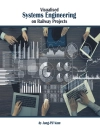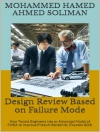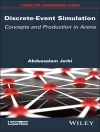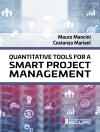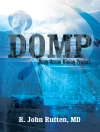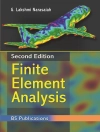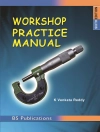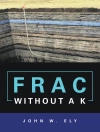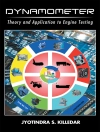The increased level of activity on structural health monitoring (SHM) in various universities and research labs has resulted in the development of new methodologies for both identifying the existing damage in structures and predicting the onset of damage that may occur during service. Designers often have to consult a variety of textbooks, journal papers and reports, because many of these methodologies require advanced knowledge of mechanics, dynamics, wave propagation, and material science. Computational Techniques for Structural Health Monitoring gives a one-volume, in-depth introduction to the different computational methodologies available for rapid detection of flaws in structures.
Techniques, algorithms and results are presented in a way that allows their direct application. A number of case studies are included to highlight further the practical aspects of the selected topics. Computational Techniques for Structural Health Monitoring also provides the reader with numerical simulation tools that are essential to the development of novel algorithms for the interpretation of experimental measurements, and for the identification of damage and its characterization.
Upon reading Computational Techniques for Structural Health Monitoring, graduate students will be able to begin research-level work in the area of structural health monitoring. The level of detail in the description of formulation and implementation also allows engineers to apply the concepts directly in their research.
Зміст
1. Introduction.- 2. Fundamentals Concepts in Elasticity, Mechanics and Wave Propagation.- 3. Signal Processing Techniques.- 4. Application of The Finite Element Method in SHM.- 5. Spectral Finite Element Method.- 6. Simplified Spectral Models for Damaged Waveguides.- 7. Perturbation Methods for Damaged Structures.- 8. Bridging Scale Method.- 9. Modeling of Actuators and Sensors for SHM.- 10. Computational Techniques for Damage Detection, Classification and Quantification.- 11. Use of Soft Computing Tools for Damage Detection.
Про автора
Dr S. Gopalakrishnan is currently Professor in the Department of Aerospace Engineering at Indian Institute of Science, Bangalore, India. He received his Master’s degree in Engineering Mechanics from Indian Institute of Technology, Madras, Chennai, India and his Ph D from the School of Aeronautics and Astronautics, Purdue University, West Lafayette, Indiana, USA. He specializes in the areas of structural health monitoring, wave propagation, smart structures and computational mechanics. He has authored four books, 123 journal papers, eight book chapters, and over 70 conference papers. He is on the editorial board of six international journals and the Associate Editor for two international journals, namely, the International Journal of Smart Materials and Structures, and Structural Health Monitoring. He was also the Section Editor on Simulation for the Encyclopedia on Structural Health Monitoring. He has undertaken funded research from Boeing Aircraft Company, USA; Pratt & Whitney Corporation, USA; Office of Naval Research (ONR), USA; Air Force of Scientific Research (AFOSR); and Aeronautical Research and Development Board, Government of India. Dr Gopalakrishnan is also the Chairman of the Aerospace Application group of the National Program on Micro and Smart Systems, Government of India, and a member of the Structures Panel of the Aeronautical Research and Development Board, Government of India. Dr Gopalakrishnan is also a fellow of The Indian National Academy of Engineering, and has guided nine Ph D and 28 Master’s students through their theses.
Dr. Massimo Ruzzene is an associate professor in the School of Aerospace Engineering and in the School of Mechanical Engineering of the Georgia Institute of Technology. He received a Laurea (Summa Cum Laude) and a Ph D in Mechanical Engineering from the Politecnico di Torino, Torino, Italy, in 1995 and 1999 respectively. Dr. Ruzzene conducts research in the broad areas of structuraldynamics and wave propagation, non-destructive evaluation techniques, modal analysis and structural acoustics. He is the author of six book chapters (two on structural health monitoring), more than 85 journal papers and more than 100 conference papers. He has participated as a PI or co-PI in various research projects funded by the Army Research Office (ARO), the Office of Naval Research (ONR), the Air Force of Scientific Research (AFOSR), NASA, the US Army, TRW Corporation, Corning Corporation, and the National Science Foundation (NSF). Dr. Ruzzene is the recipient of the 2002 Young Investigator Award from ONR. He is a member of the American Society of Mechanical Engineers (ASME), the Acoustical Society of America (ASA), and the American Institute of Aeronautics and Astronautics (AIAA). He serves as a reviewer for several journals, and as an associate editor of the Journal of Vibrations and Acoustics and of Mechanics Research Communications.
Dr. S. Hanagud worked at Stanford Research Institute (now SRI International) prior to joining the Georgia Tech Faculty in 1970. He became a tenure track faculty member in 1974. He was a co-founder of Failure Analysis Institute, Menlo Park, California in 1968. He taught at the University of Santa Clara as an adjunct faculty member from 1964 through 1970. Prior to receiving his Ph D, he was a research assistant at Stanford University and a research fellow at the Indian Institute of Science. In addition to conducting research, Dr. Hanagud advises Ph D and MS students. He has been responsible for the graduation of 32 Ph D students. He has continuously modified the graduate-level structural dynamics courses to reflect the latest developments. He also developed a new graduate-level course in the areas of structural dynamics system identification, crashworthy design of structures, applied non-linear dynamics and smart structures. Honors and awards include the Sigma Gamma Tau Teaching Award (1974) in recognition of hisundergraduate teaching; Georgia Tech Faculty Research Award (1989); Lincoln Arc Welding Foundation Award for Innovative Structural Design for Crashworthy Vehicles; four AIAA (IASc) Student Awards at Stanford University; Distinguished Alumnus, Indian Institute of Science, Bangalore, India (1992); Distinguished Fellowship of the International Development Fund of Japan (1993); and Fellow of American Institute of Aeronautics and Astronautics (2004). Dr. Hanagud’s major contributions include the introduction of the concept of smart structures to the army research office (ARO); health monitoring techniques based on super-harmonic response associated with delamination, debonding and cracks; optimized sine wave web concept for energy absorbing structures; perturbation-based techniques for identification of nonlinear structural dynamic systems; scanning laser-based techniques for linear structural dynamic system identification; and development of closed loop models and vibration control techniques using smart or adaptive structures. He is the author of more than 250 refereed publications.


